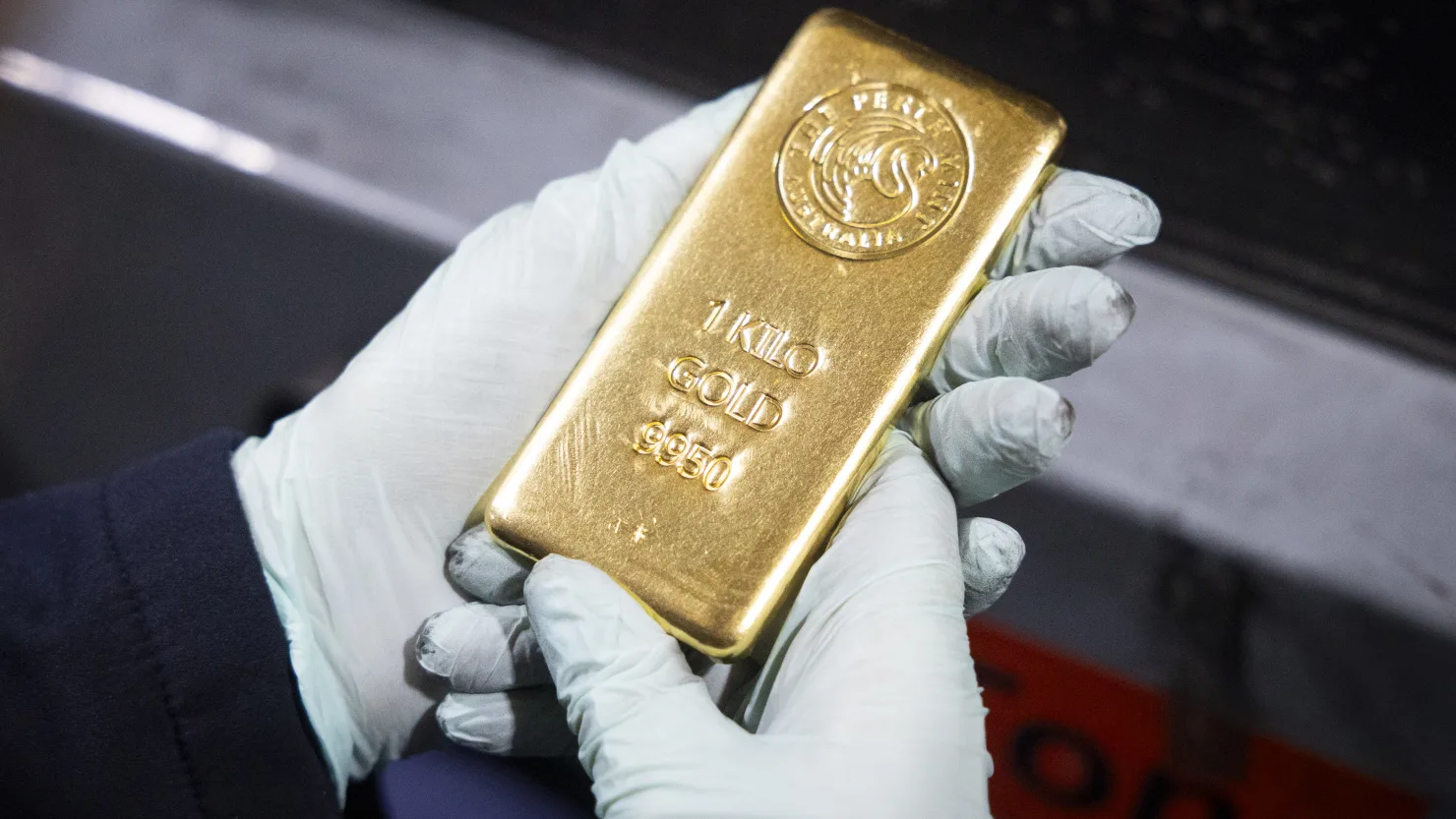Gold prices fell sharply on Friday, retreating more than 2% after hitting a record high above $4,300 per ounce, pressured by a firmer U.S. dollar and President Donald Trump’s remark that a “full-scale” tariff on China would be unsustainable.
Spot gold dropped 2.6% to $4,211.48 per ounce, following an intraday high of $4,378.69. The metal had breached $4,300 for the first time on Thursday and is still set for a weekly gain of about 4.8%. Meanwhile, U.S. December gold futures closed down 2.1% at $4,213.30.
The dollar index rose 0.1%, making dollar-denominated bullion more expensive for overseas buyers. Earlier, gold was on track for its largest weekly gain since September 2008, when the collapse of Lehman Brothers triggered the global financial crisis.
“I think Trump’s more conciliatory tone since the initial announcement of 100% tariffs has taken a little heat out of the precious trade,” said Tai Wong, an independent metals trader. Trump also confirmed a meeting with Chinese President Xi Jinping, easing some market jitters over the trade conflict.
Gold has surged over 64% this year, driven by geopolitical tensions, central bank purchases, a shift away from the dollar, and strong inflows into gold ETFs. Expectations of U.S. interest rate cuts have also supported the non-yielding asset.
Suki Cooper, global head of commodities research at Standard Chartered, said, “We’re forecasting gold to average $4,488 in 2026, with further upside from structural factors supporting the market.” HSBC raised its 2025 average gold price forecast to $3,455 per ounce and projects it could reach $5,000 in 2026.
Physical demand in Asia remained firm despite record prices, with Indian premiums hitting a decade-high ahead of festivals. Silver also fell, down 5.6% to $51.20 per ounce, after hitting a record $54.47, though it is set for a 2% weekly gain, tracking gold’s rally.



0 Comments